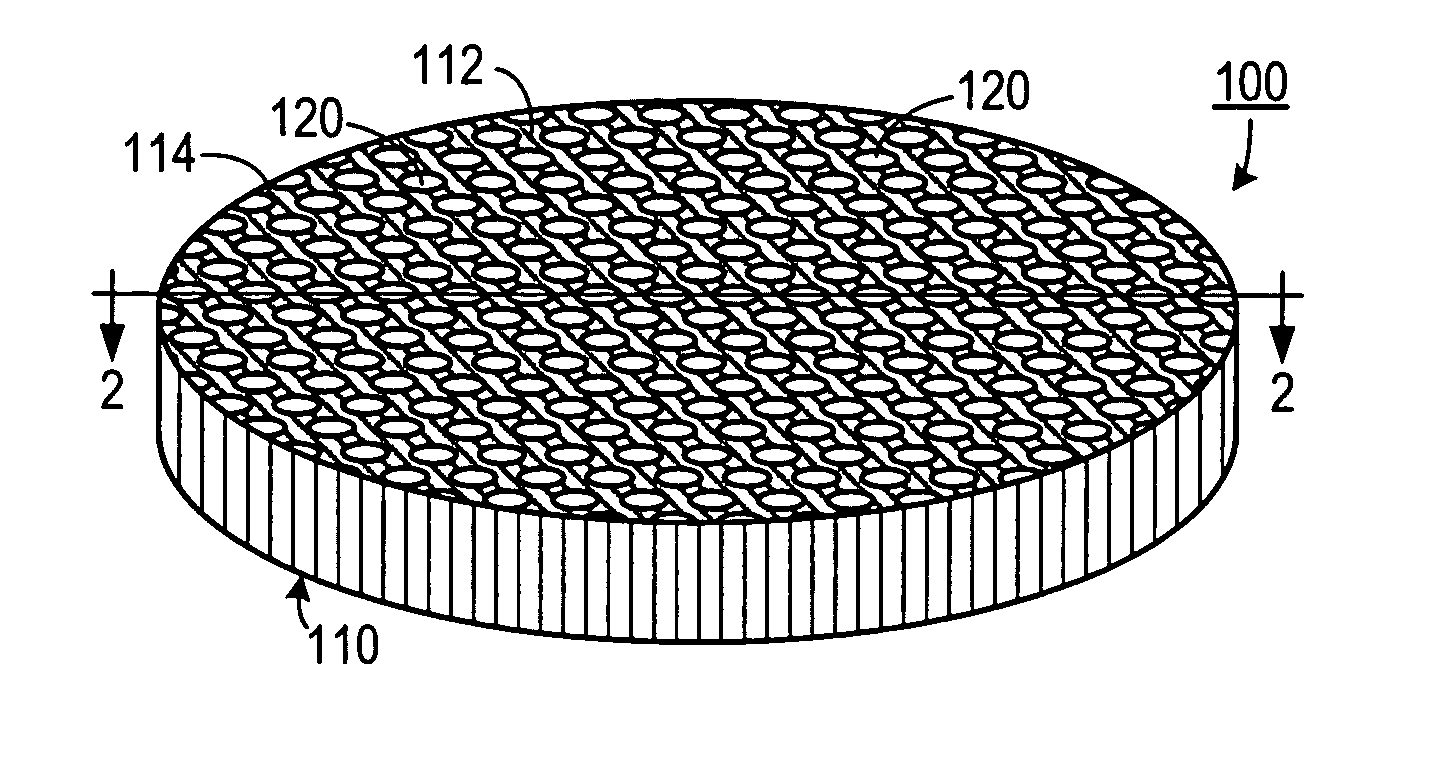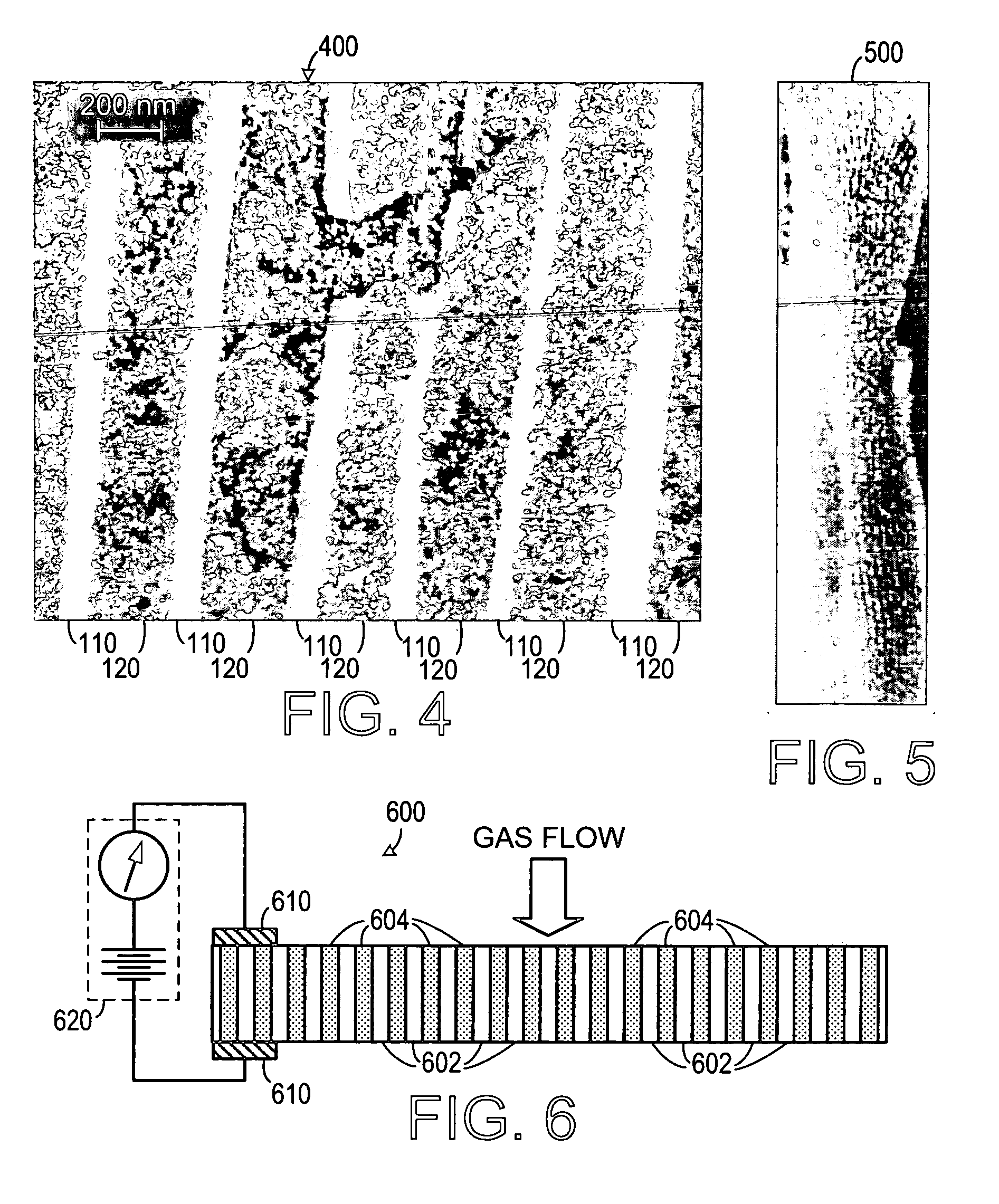Mesoporous nano-crystalline titania structures for hydrogen sensing
a nano-crystalline titania and hydrogen sensing technology, applied in the field of nano-scale structures, can solve the problems of slow response time, poor selectivity of titania systems, and limiting performance indicia such as response and sensitivity
- Summary
- Abstract
- Description
- Claims
- Application Information
AI Technical Summary
Problems solved by technology
Method used
Image
Examples
Embodiment Construction
[0022] A preferred embodiment of the invention is now described in detail. Referring to the drawings, like numbers indicate like parts throughout the views. As used in the description herein and throughout the claims, the following terms take the meanings explicitly associated herein, unless the context clearly dictates otherwise: the meaning of “a,”“an,” and “the” includes plural reference, the meaning of “in” includes “in” and “on.” Unless otherwise specified herein, the drawings are not necessarily drawn to scale. Also, as used herein “mesoporous nanocrystalline hybrid material” refers to a porous material with nanoscale crystals and an amorphous matrix. Diameters of pores and passages listed herein refer to average diameters to provide for eccentricity.
[0023] As shown in FIG. 1, one illustrative embodiment includes a structure 100 that includes a substantially non-conductive frame 110. The frame 110 has at least one exterior surface 114 and defines a plurality of passages 120 t...
PUM
| Property | Measurement | Unit |
|---|---|---|
| Temperature | aaaaa | aaaaa |
| Pore size | aaaaa | aaaaa |
| Pore size | aaaaa | aaaaa |
Abstract
Description
Claims
Application Information
 Login to View More
Login to View More - R&D
- Intellectual Property
- Life Sciences
- Materials
- Tech Scout
- Unparalleled Data Quality
- Higher Quality Content
- 60% Fewer Hallucinations
Browse by: Latest US Patents, China's latest patents, Technical Efficacy Thesaurus, Application Domain, Technology Topic, Popular Technical Reports.
© 2025 PatSnap. All rights reserved.Legal|Privacy policy|Modern Slavery Act Transparency Statement|Sitemap|About US| Contact US: help@patsnap.com



